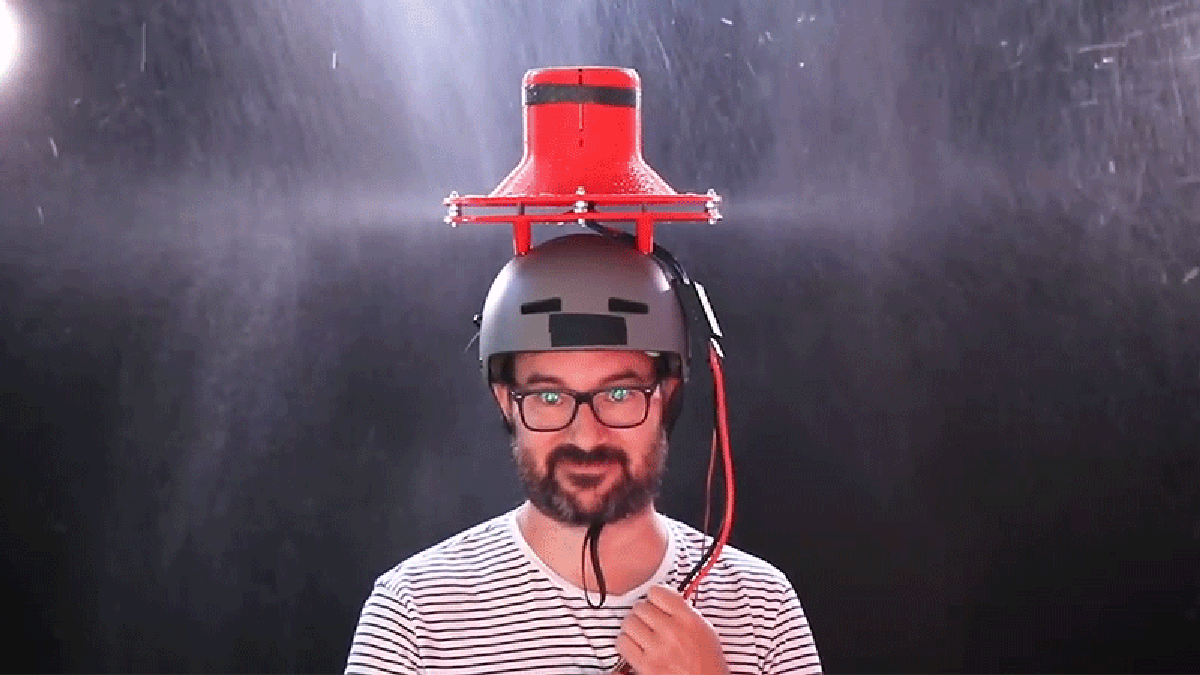
Watching their entire creative process is as entertaining as the final product. Their first attempts involved 3D-printing an impeller powered by an electric motor used for RC planes that would push air outwards and away from their head when the setup was mounted to a helmet. However, 3D printing is an imperfect process, resulting in unbalanced impellers that vibrated so violently it actually affected Miranda’s vision while the device was strapped to his head.
The eventual solution was to trade the 3D-printed impeller for a pre-built (and perfectly balanced) ducted fan assembly, which is often used to create RC planes with high-power jet engines. Air is sucked in through the ducted fan’s opening atop their head and directed down and outwards through a thin 360-degree exhaust slit. The powerful blast from the ducted fan does exactly what it was designed to do, creating a curtain of air all around Miranda that deflects falling water away (a garden hose was used for testing) but the solution does come with some trade-offs. Not only will everyone within a 10-foot radius of Miranda feel the exhaust and be pelted with deflected rain, but the turbine engine is incredibly loud when running at enough speed to keep the rain away. You’d get to where you were going dry, but instead of dealing with a wet umbrella when you got there, you’d be dealing with ringing in your ears and potential hearing loss.